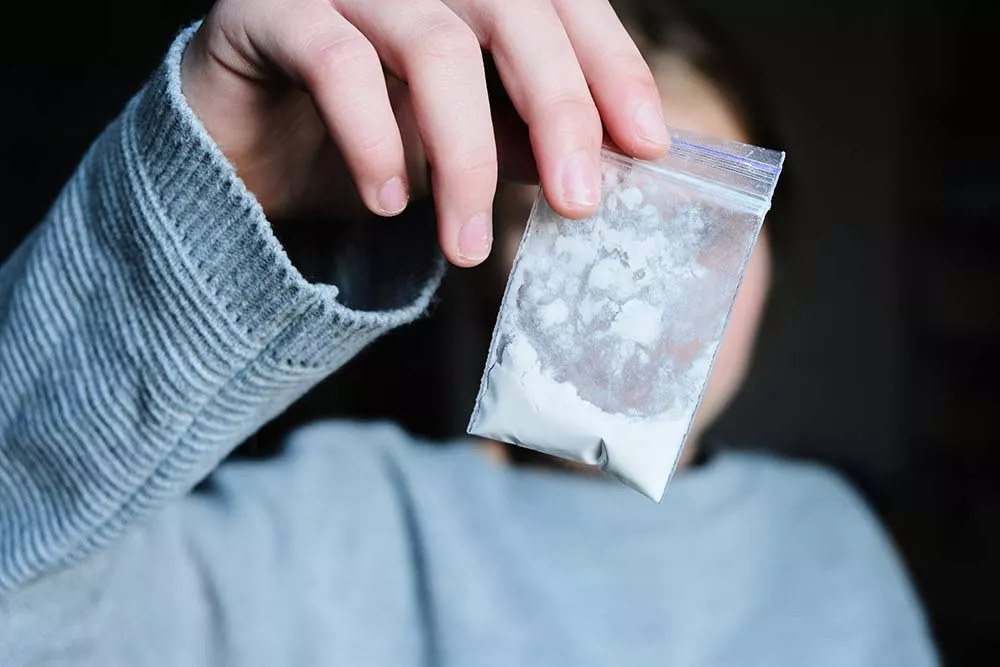According to the Centers for Disease Control and Prevention (CDC), fentanyl is 100 times stronger than morphine and 50 times more potent than heroin. It is the most powerful opioid pain medication now licensed for pharmacological intervention. Although healthcare professionals regard fentanyl as safe and effective when used in a controlled medical setting, the medication nonetheless possesses a high risk of misuse and dependence. In the United States, illicit fentanyl misuse is the leading cause of most overdose deaths. And illicit fentanyl is thought to be at the heart of the next wave of the opioid crisis.
Fentanyl is a synthetic opioid medication approved by the FDA for analgesic (pain reliever) and anesthetic purposes. Fentanyl, like morphine, is widely used to treat chronic pain or to relieve severe pain following surgery. It’s also used to treat chronic pain in individuals who are physically tolerant of other opioids. Fentanyl is a schedule II controlled substance that comes in the following forms:
Pharmaceutical fentanyl is often administered intravenously via injection, transdermal patch, or tablets to treat pain in cancer patients. Although prescription fentanyl can be diverted for misuse, most fentanyl-related morbidity and mortality have been linked to illicit fentanyl, collectively known as non-pharmaceutical fentanyl (NPF).
While pharmaceutical fentanyl is commonly used to treat acute or chronic pain, illicit fentanyl is distributed as a powder or counterfeit pills on the illegal drug market for its heroin-like effects. And misuse generally occurs via injection, snorting, smoking, taken orally as a pill or tablet, and laced onto blotter paper, among other methods.
Fentanyl patches that have been discarded can still contain large narcotic levels. Fentanyl patches are misused by removing the gel from inside the patch and injecting or ingesting it. Fentanyl patches are also misused by being frozen, sliced into little pieces, and inserted under the tongue or cheek.
Fentanyl affects the brain by attaching to the opioid receptors, which are found in areas of the brain that govern emotions and pain. When fentanyl connects to these receptors, dopamine levels in the reward centers of the brain spike, resulting in feelings of pleasure and relaxation.
When used appropriately to treat pain, fentanyl provides pain relief. But when misused, it may cause dependence, tolerance, respiratory depression, unconsciousness, coma, and death.
Fentanyl can cause side effects ranging from mild to severe in some individuals. Adverse effects, particularly the respiratory depressive effects of fentanyl, are more likely to occur in older adults than younger people. Healthcare providers must use extra vigilance and monitor this age group frequently to avoid complications. Some of the most common side effects of fentanyl may include, but are not limited to:
Higher doses of fentanyl are more likely to cause severe side effects. Seek medical attention immediately if you experience:
Fentanyl rarely causes a severe allergic reaction. However, if you observe any symptoms of a major allergic reaction, such as a rash, swelling (particularly on the face/tongue/throat), extreme dizziness, or difficulty breathing, seek medical attention immediately.
This medication contraindicates individuals with certain health conditions. Inform your healthcare provider if you have:
In addition, inform your healthcare professional if you:
Fentanyl is only safe when prescribed and supervised by a medical professional. Fentanyl sold on the street is highly dangerous. The amount of fentanyl in a pill, powder, or as an additive is highly variable, and people have died after only one dose. It can be added to other drugs, including heroin, cocaine, methamphetamine, and marijuana, so it can easily be ingested accidentally. If you use any of these substances, you should use fentanyl test strips and have Narcan available in the event of an overdose. Take this medication only as directed by your healthcare provider. It’s crucial not to exceed the specified dose or take it longer than recommended. This is especially significant for the elderly, who are more vulnerable to the negative effects of painkillers. Taking too much of this medication for too long can lead to physical and psychological dependence. Fentanyl’s high potency increases the risk of overdose, especially if an individual is unaware that a substance they are consuming contains it. They may underestimate the dosage they’re consuming, leading to an overdose.
The U.S. Food and Drug Administration (FDA) has mandated that opioid analgesics have a Risk Evaluation and Mitigation Strategy (REMS) to help ensure that the benefits of the medication outweigh its risks and prevent the misuse of pharmaceutical fentanyl.
Abrupt discontinuation of fentanyl can cause withdrawal symptoms, especially if you’ve been taking it for a long period of time or in high doses. Your healthcare practitioner will gradually reduce your dose to mitigate the risk of withdrawal symptoms.
Symptoms of fentanyl withdrawal may include:
If you experience any of the following withdrawal symptoms, seek medical help immediately.
Illicit fentanyl is frequently combined with other substances like heroin, meth, cocaine, methamphetamine, and MDMA, increasing the likelihood of a lethal interaction. According to the National Institute on Drug Abuse (NIDA), fentanyl and other synthetic opioids have become the leading cause of overdose deaths in the United States. The high potency of fentanyl can considerably raise the risk of overdose, especially if an individual is unaware of the presence of fentanyl in the substance they misuse.
Symptoms of a fentanyl overdose may include:
In the event of an overdose, the individual who has overdosed should be given naloxone (Narcan) immediately. Naloxone can be given to temporarily reverse the effects of an opioid overdose until medical help arrives. It’s available over the counter as a fast-acting nasal spray or a preloaded multiple-dose syringe and can be administered by health professionals, family members, and peers. However, as fentanyl is a potent medication, it may require several doses of naloxone to reverse the effects of a fentanyl overdose. The next step would be to contact 911 and stay with the individual until an ambulance arrives.
Fentanyl is typically not advised to be used while pregnant since it has been linked to a variety of complications for the infant during early pregnancy. Fentanyl has also been known to cause neonatal abstinence syndrome in newborn babies, even when taken at the end of a pregnancy. However, it’s critical to address pain during pregnancy. And fentanyl may be the best option for certain pregnant women experiencing severe pain. For this reason, a healthcare professional is the best person to consult to determine what is best for you and your baby. Furthermore, fentanyl is also not recommended during breastfeeding. Fentanyl can be present in small doses in breast milk and cause respiratory problems in babies.
Drinking alcohol or taking sedative medication (benzodiazepines, barbiturates) intensifies the effects of opioids. Hence, combining fentanyl with alcohol or sedatives can increase the risk of severe health complications and accidental overdose. The simultaneous use of these two substances can result in irregular heart rate, respiratory arrest, coma, and death.
Although breaking free from substance use disorders like fentanyl and alcohol is challenging, recovery is possible. Medication combined with behavioral therapy has been demonstrated to successfully treat fentanyl dependence, just as it has been for other opioid dependence.
If you are seeking help with your loved one’s addiction, contact us today or complete our quick contact form below, to speak with an addiction treatment specialist.
If you need help with your substance use disorder, we are here to help you build your confidence and momentum towards the future you want. We provide treatment services for adults with alcohol, opioid, and other substance use disorders. We are currently located in Louisiana, Massachusetts, New Jersey, North Carolina, Ohio, Texas, and Washington.
 Signs and Symptoms of Drug Addiction – How to Tell if Someone Needs Help for a Drug Problem
Signs and Symptoms of Drug Addiction – How to Tell if Someone Needs Help for a Drug Problem
 Questions to Ask Your Addiction Treatment Provider
Questions to Ask Your Addiction Treatment Provider
 What You Need to Know About Meth
What You Need to Know About Meth